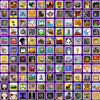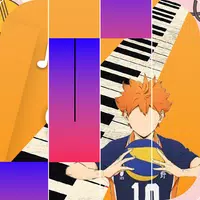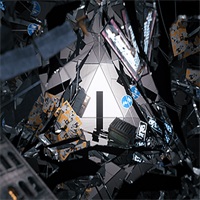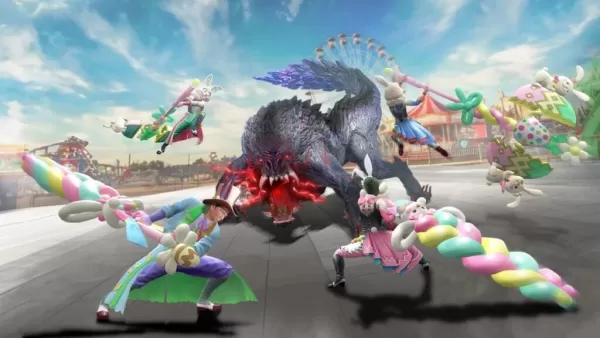"Blades of Fire: Exclusive First Look"
When I first sat down to play MercurySteam's latest project, Blades of Fire, I anticipated a return to the studio's roots with their Castlevania: Lords of Shadow series, infused with the modern flair seen in God of War. However, within an hour, my perception shifted; it felt more like a Soulslike, but with a twist—all the stats were embedded in the weapons rather than a traditional RPG character sheet. By the end of my three-hour hands-on session, it became clear that Blades of Fire is both a nod to familiar genres and a departure from them, offering a fresh take on the action-adventure genre through its unique blend of borrowed and innovative elements.
While Blades of Fire isn't a direct clone of Sony Santa Monica's God of War, the similarities are striking at first glance. The game's dark fantasy setting, heavy-hitting combat, and close third-person camera echo the Norse saga of Kratos. Throughout the demo, I navigated a winding map filled with treasure chests, aided by a young companion, Adso, who assisted in puzzle-solving. Our quest led us to a woman of the wilds living in a house atop a giant creature. The game's nods to FromSoftware's Souls series are also evident, with anvil-shaped checkpoints that restore health potions and respawn enemies.
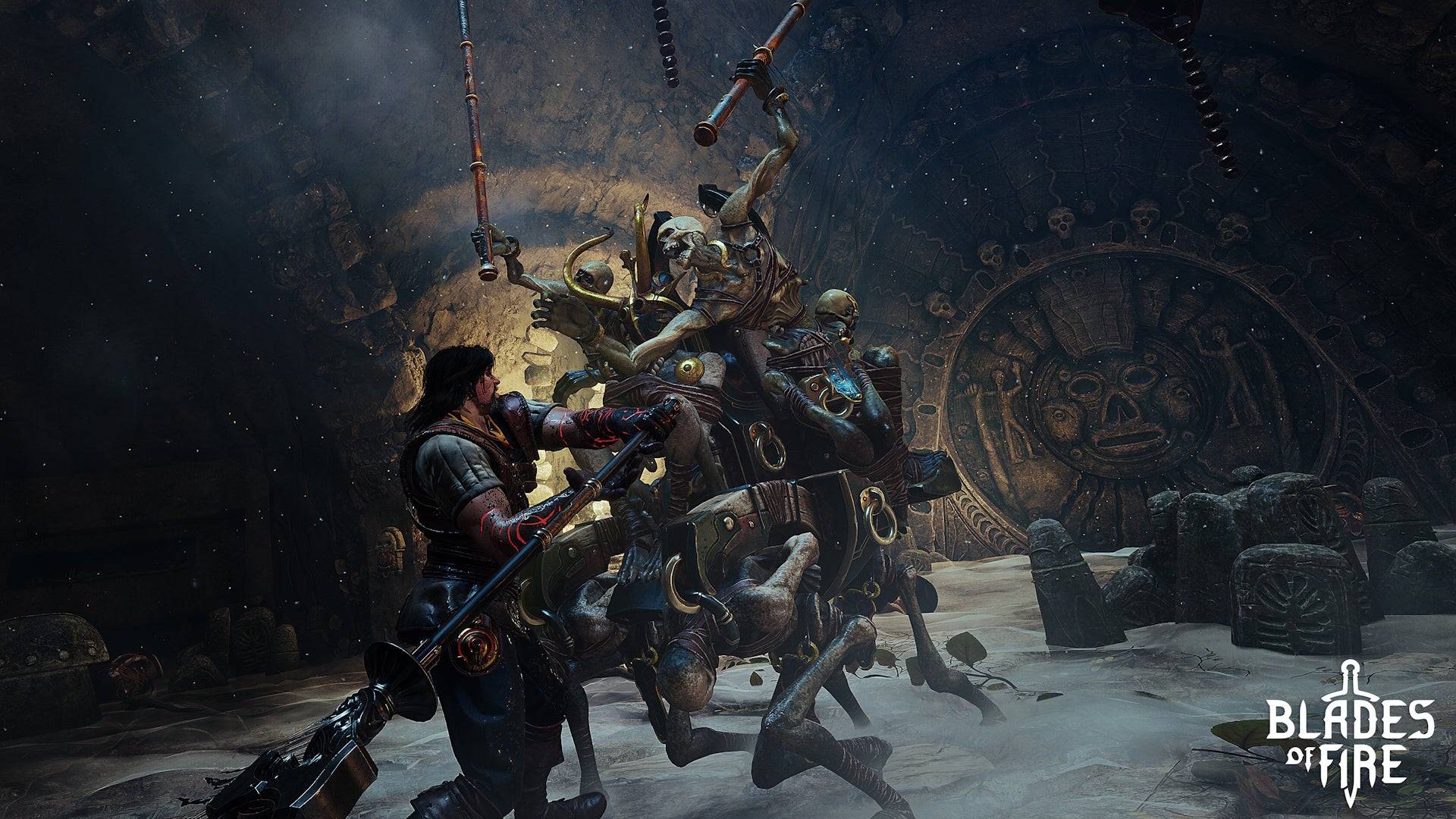
The world of Blades of Fire evokes a nostalgic 1980s fantasy vibe. You can imagine Conan the Barbarian fitting right in with its muscular soldiers, while the bizarre orangutan-like enemies on bamboo pogo sticks could easily belong in Jim Henson's Labyrinth. The narrative, too, has a retro feel: an evil queen has turned steel into stone, and it's up to you, Aran de Lira—a blacksmith demigod—to defeat her and restore the world's metal. However, the story, characters, and writing may not stand out as compelling, reminiscent of the often-overlooked narratives from the Xbox 360 era.
Blades of Fire excels in its mechanics, particularly in its combat system. It utilizes directional attacks mapped to each face button on the controller. On a PlayStation pad, triangle targets the head, cross the torso, while square and circle swipe left and right. This system requires careful observation of enemy stances to break through defenses effectively. The visceral impact of combat is highlighted by the gory visuals of blood spurting from wounds.
The system truly shines in encounters like the first major boss fight against a slobbering troll. This troll has a secondary health bar that can only be depleted after dismembering it, with the limb removed depending on your attack angle. You can even slice off the troll's face, leaving it blind and disoriented until it regenerates.
Your weapons in Blades of Fire are central to gameplay and require meticulous attention. As in Monster Hunter, you'll need to sharpen your blade mid-fight to maintain its effectiveness. However, all weapons have a durability meter that depletes over time, requiring repairs at anvil checkpoints or melting down for new crafting materials.
The game's most innovative feature is its forge system. Rather than finding new weapons, you craft them from scratch. Starting with a basic template, you can modify various aspects, such as the length of a spear's pole or the shape of its head, which directly impacts the weapon's stats. The crafting process culminates in a detailed minigame where you hammer out the metal on an anvil, striving to match a curve with vertical bars. The quality of your work is rated by stars, which determine the weapon's repairability.
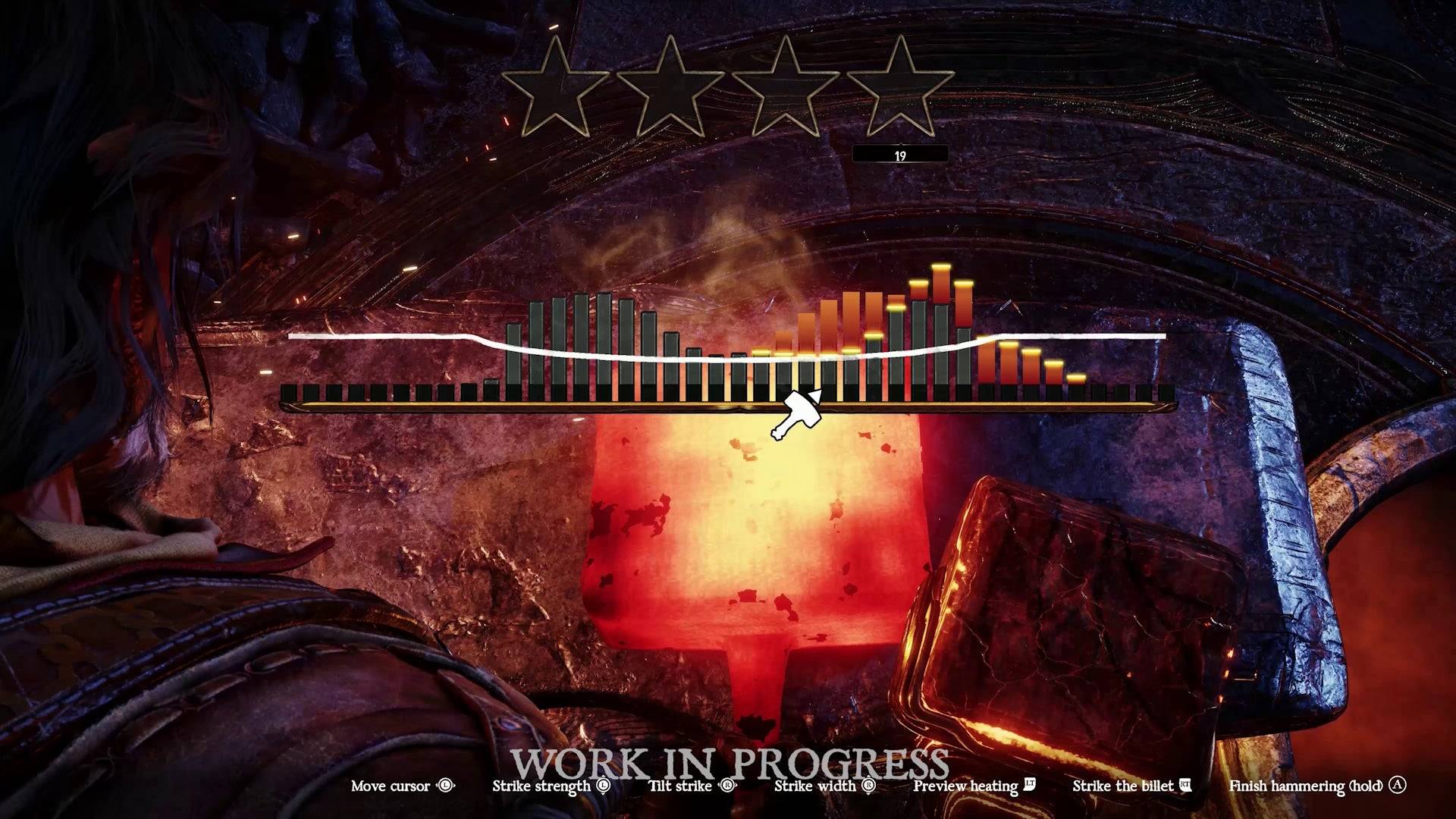
While the forge concept is intriguing, the minigame can be frustratingly obtuse, lacking clear feedback on how strikes affect the metal's shape. Hopefully, improvements or a better tutorial will be implemented before the game's launch.
MercurySteam's vision for Blades of Fire extends beyond the demo, aiming to forge a deep connection between players and their crafted weapons throughout a 60-70 hour journey. As you explore and find new materials, you can reforge your weapons to meet new challenges. The death system adds another layer of engagement: upon defeat, you drop your weapon, which remains in the world for you to recover.
The influence of Dark Souls is undeniable, yet Blades of Fire also draws from Blade of Darkness, a spiritual predecessor developed by MercurySteam's founders. The game reinterprets established systems, crafting a unique identity that sets it apart from its inspirations.

Despite some concerns about the generic dark fantasy setting and potential lack of enemy variety, the deep connection between your forged blades and combat mechanics has me intrigued. In an era where complex games like Elden Ring and Monster Hunter have gained mainstream popularity, Blades of Fire has the potential to offer a unique and engaging experience to the action-adventure genre.
Blades of Fire Screenshots

 9 Images
9 Images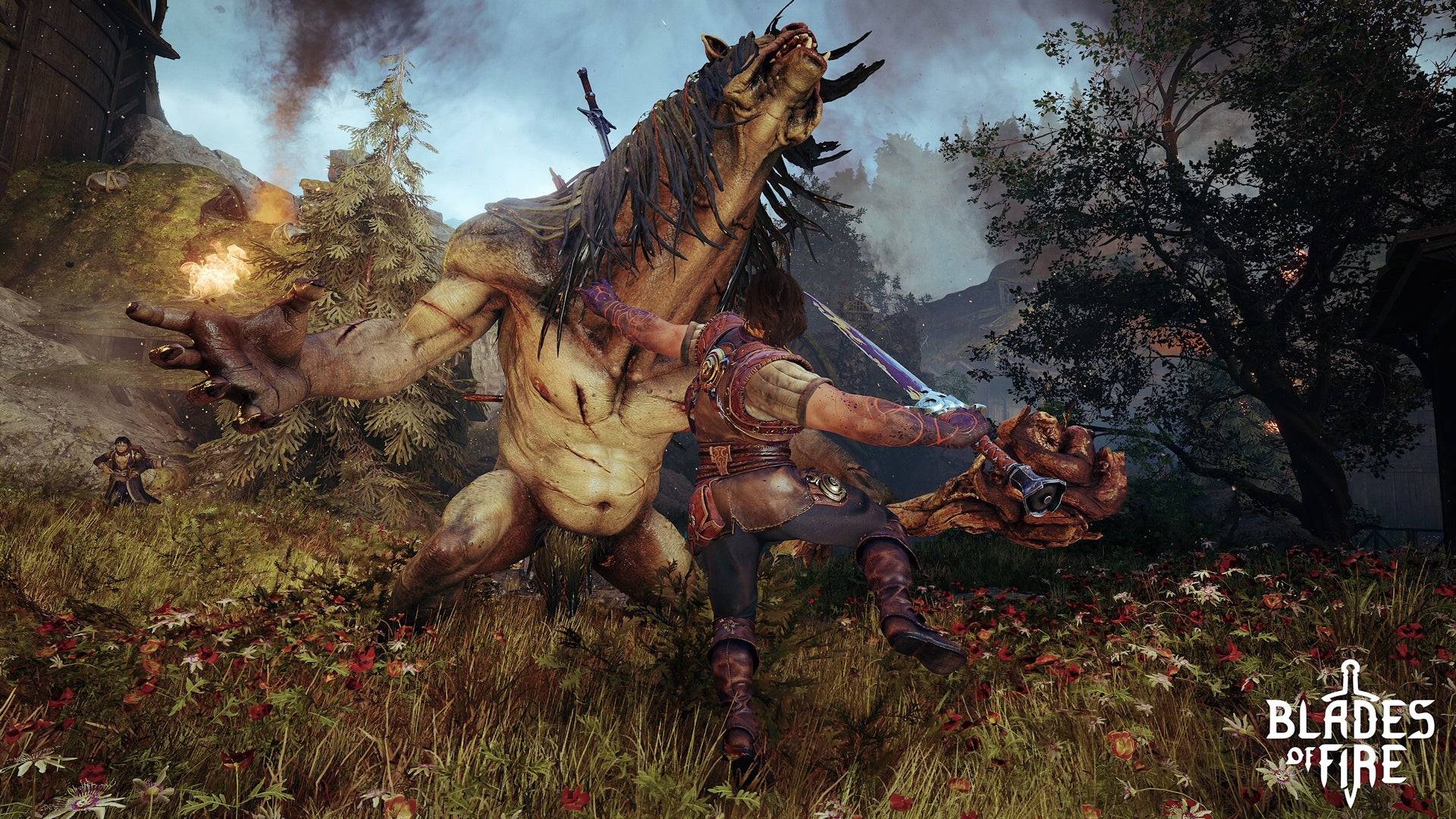
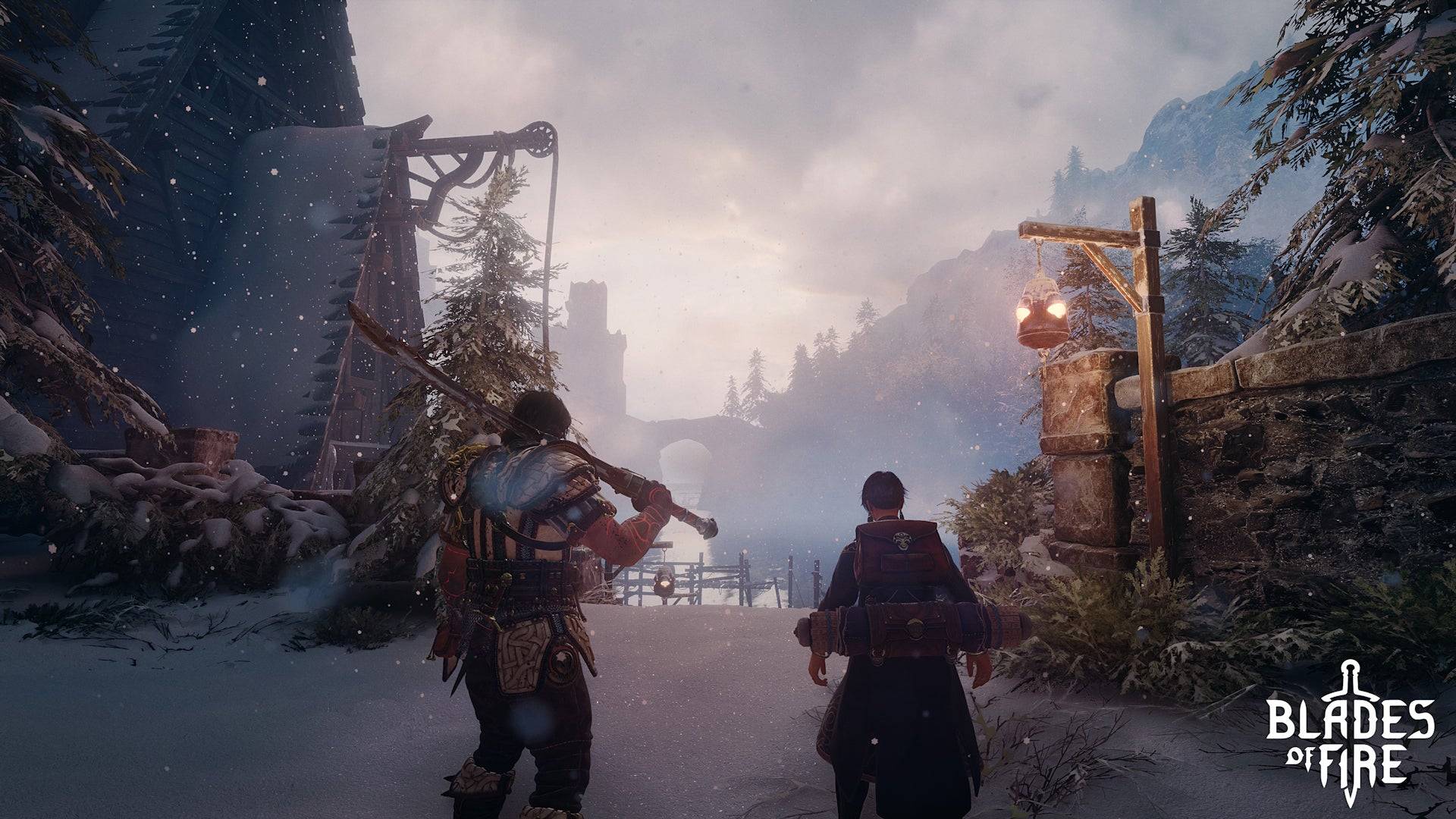
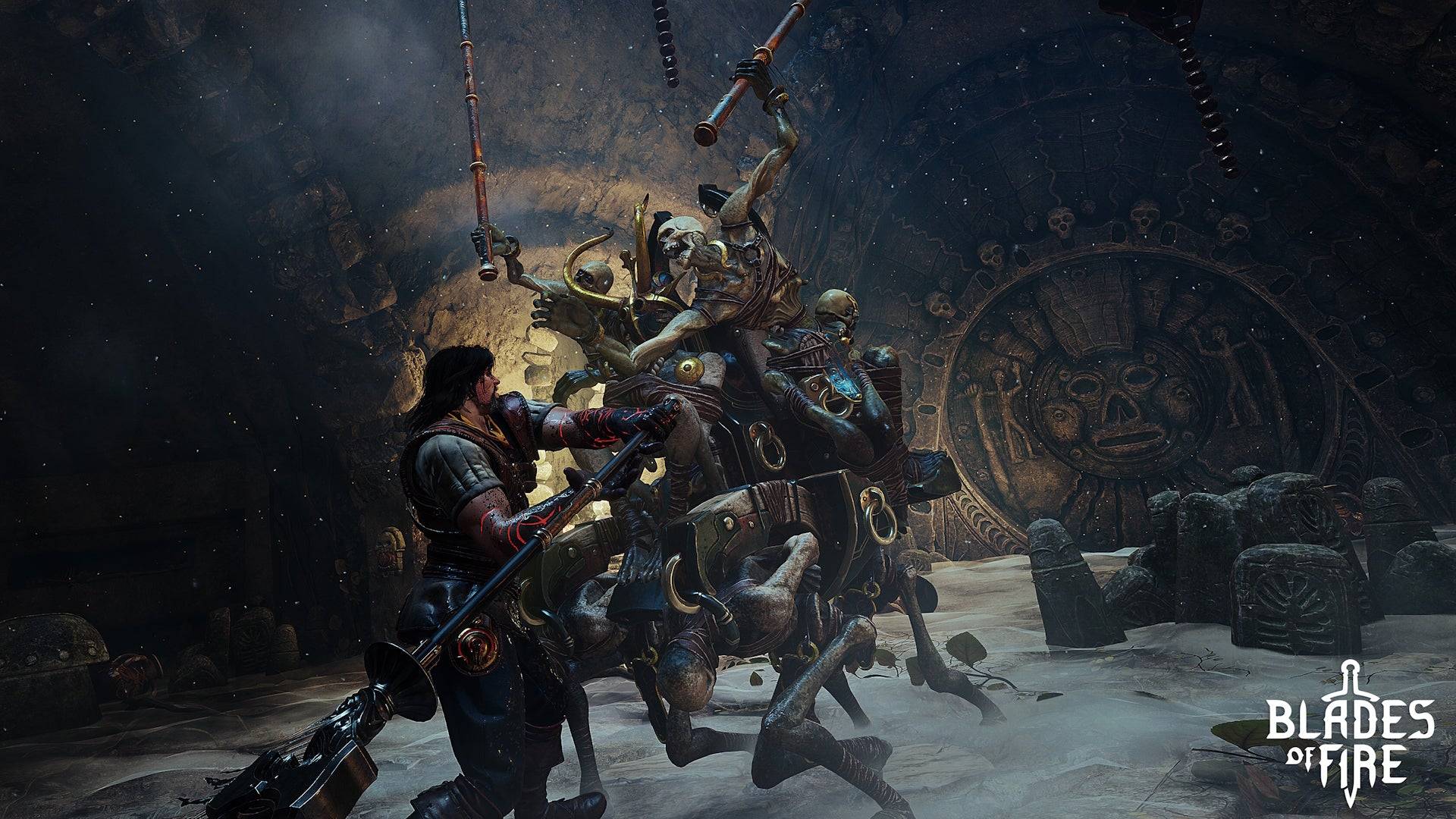
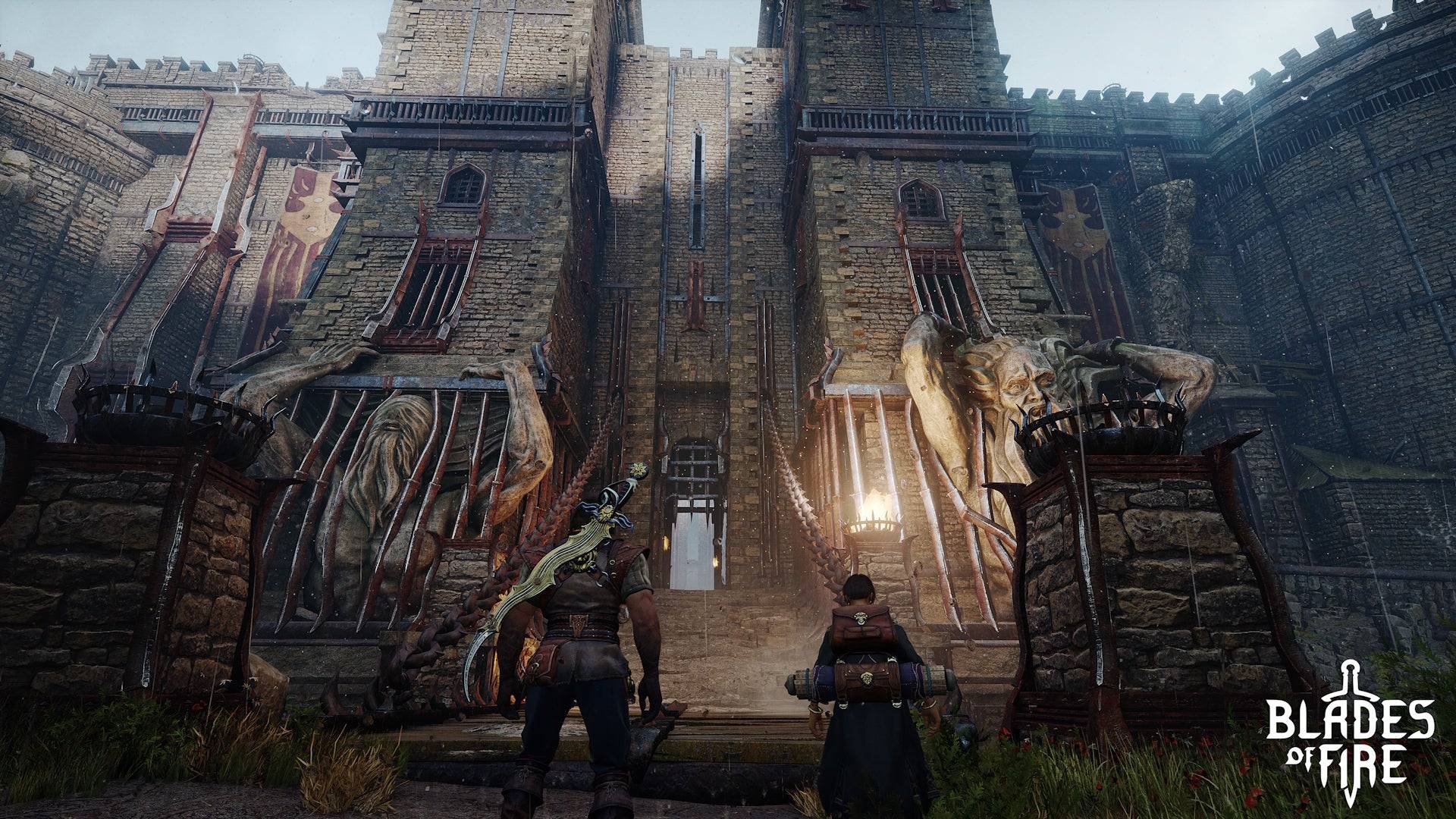
-
Clash Royale has finally introduced a major upgrade for the Inferno Dragon, nearly a decade after its initial release. The fiery Legendary card now boasts enhanced capabilities, with Supercell partnering with Finnish comedian Ismo Leikola for a speciAuthor : Natalie Dec 22,2025
-
HBO's Harry Potter TV series has reached a major casting milestone with the first six roles officially announced. While fans eagerly await reveals for Harry, Ron, Hermione, and Voldemort, we now know who will portray Albus Dumbledore, Minerva McGonagAuthor : Gabriel Dec 22,2025
- Spring Valley Farm Game: January 2025 Redeem Codes
- WWE Superstars Join Call of Duty Warzone: Mobile Roster
- Midnight Girl is a minimalist point-and-click adventure set in Paris in the 60s, now open for pre-orders on mobile
- Mobile Legends: Bang Bang – Best Lukas Build
- "Grand Outlaws Unleashes Chaos and Crime on Android Soft Launch"
- Video Game Song Surpasses 100 Million Streams on Spotify






